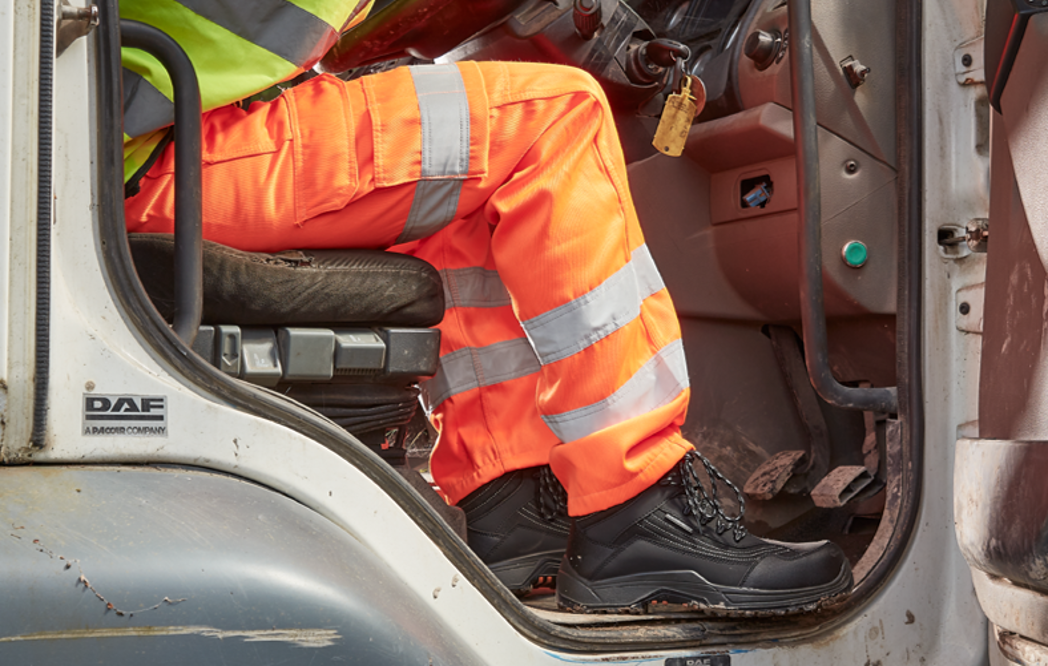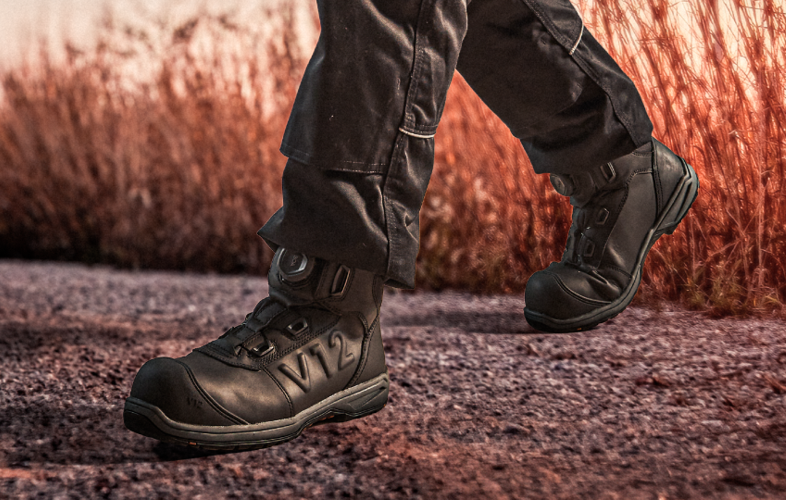A toecap and a midsole are features that most of us know well. Afterall, protecting toes from impact and stopping sharp items from entering underfoot give the essential protection needed to avoid painful and stressful injuries.
But what happens when your environment and role require something more specialised? In this blog, we look at some of the more specialist safety boot features available, and explain whether you might need them to stay protected in your workplace.
ANKLE PROTECTION
Ankle protection is an often-overlooked element of safety, but safeguarding this area of the foot can be vital. A higher lace boot such as a hi-leg is the best footwear option here as it provides specific support to the ankle.
WHEN DO I NEED ANKLE PROTECTION?
One of the most common causes of ankle twisting is walking on uneven ground, so ankle support should be a priority if you work on surfaces such as:
- Wet sand
- Earth and mud
- Ballast
- Aggregate
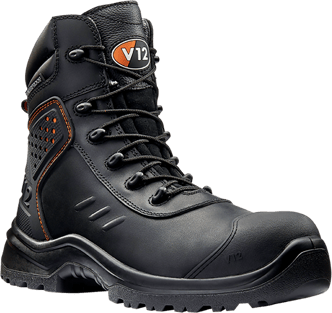 Also, when workers are walking and climbing up and down gantries and ladders, they can end up moving at different angles, and it’s the ankle that feels the brunt of a lot of this movement. So, if you work at height regularly, ankle support could be a big bonus.
Also, when workers are walking and climbing up and down gantries and ladders, they can end up moving at different angles, and it’s the ankle that feels the brunt of a lot of this movement. So, if you work at height regularly, ankle support could be a big bonus.
However, support isn’t the only aspect required to protect the ankle – protective cushioning is also vital in roles where there is a danger of side impact from heavy tools or catching them on hard or sharp objects.
The V1750 Defender STS (pictured) is a great example of a boot that features both a high leg construction and special cushioning to support and protect the delicate ankle from impact and twisting. Defender’s ankle protection uses a Poron impact absorbing pod - check out how it works below:
METATARSAL PROTECTION
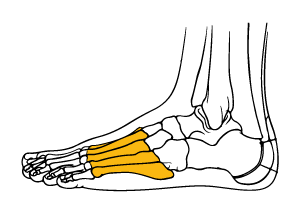 A boot with metatarsal protection safeguards the long, thin metatarsal bones above your toes. While we all know the toecap is there to protect the toes, many forget that the metatarsals also extend beyond the body line, so are equally vulnerable to crushing from dropped or rolling objects.
A boot with metatarsal protection safeguards the long, thin metatarsal bones above your toes. While we all know the toecap is there to protect the toes, many forget that the metatarsals also extend beyond the body line, so are equally vulnerable to crushing from dropped or rolling objects.
WHEN DO I NEED A METATARSAL BOOT?
People who work in roles that involve heavy rolling objects such as:
- Kerb stones
- Drums
- Iron work
These roles might include:
- Road construction
- Demolition
- Welding
- Sewer maintenance
The V2180 Invincible IGS (pictured) is V12’s innovative metatarsal protection boot. It features an incredibly strong carbon strap and shock absorbing PU pad which safeguards the metatarsals with next-level protection.
LADDER GRIPS
When people think of safety boot soles, the tread is the image that tends to come to mind. But having ladder grips built into a boots’ tread can be crucial in reducing the extremely dangerous and even fatal falls from height which occur throughout the UK each year. When V12 developed the IGSTM (Intelligent Grip System) and STSTM (Stability Traction System) sole units, we designed them with four deep ladder grips to keep the wearer stable and safe when carrying out ladder work.
WHEN DO I NEED LADDER GRIPS?
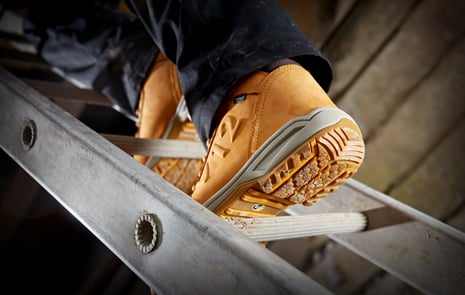 The obvious answer is if you work regularly on ladders, but these grips also provide stability if your job involves climbing:
The obvious answer is if you work regularly on ladders, but these grips also provide stability if your job involves climbing:
- Steps on plant and machinery
- Retractable steps on lorries and trucks
- Rungs on a telegraph pole
- Fixed flat-rung ladders attached to fuel tanks
Do you want to stay safe when working from height? Find what you need to know here.
METAL-FREE BOOTS
A lot of safety boot wearers know that metal-free footwear tends to be lightweight, and while this is definitely a comfort bonus, there are far more important safety benefits for the wearer.
NON-SPARKING FOOTWEAR
Boots with steel toecaps or other metal components can pose a risk of sparking, and in work environments that create flammable gases or vapours, a spark can cause explosions which can put life in serious danger.
WHEN DO I NEED NON-SPARKING FOOTWEAR?
If you work in an environment which is a flammable or explosive one. These roles include:
- Vehicle refuelling
- Paint spraying
- Working in environments like flour mills where fine dusts are handled
SCANS AND METAL DETECTORS
Metal-Free footwear is important in environments with high levels of security such as airports and military bases because people need to be scanned. If footwear contains a steel toe cap or midsole, these items can either set off alarms or will have to be removed beforehand which is time consuming and compromises safety by removing impact and slip protection.
ANTI-STATIC FOOTWEAR
Anti-static footwear prevents a build-up of static electrical charges in the human body by sending them to the ground. They are designed to prevent electrical equipment from being damaged by static shocks, charges or sparks.
ESD (ELECTROSTATIC DISSIPATIVE)
Electrostatic discharge footwear has the same benefit as anti-static, but the key difference is ESD is a more stringent version, as it has a lower resistance range – between 0.1 and 100 megaohms, whereas anti-static footwear has an electrical resistance between 0.1 and 1000 megaohms. So, because ESD shoes meet stricter standards, they are better at reducing static charges. As a result, all ESD footwear is anti-static, but not all anti-static footwear is ESD compliant.
WHEN DO I NEED ANTI-STATIC OR ESD FOOTWEAR?
.jpg?width=459&height=417&name=V12%20staff%20wellbeing%20(rail).jpg) This type of footwear is important in environments where shocks from static charges can cause electrical damage and failure. These include workplaces:
This type of footwear is important in environments where shocks from static charges can cause electrical damage and failure. These include workplaces:
- Where electronic components are manufactured
- Featuring clean rooms
- Where static electricity is created by machinery or appliances
Industries where static charges are present alongside potentially explosive elements like gas, fuel vapour or coal dust might also require ESD or anti-static footwear.
Note: it’s unlikely you’ll be asked to judge whether you need ESD or anti-static footwear by your employer. They will have a clear idea of which electrostatic footwear options will be required based on the equipment in your workplace.
It is also important to note that if you are responsible for sourcing footwear to dissipate static electricity, it is possible to over spec. For example, your work area might only need electrical resistance up to 35 megaohms, so getting ESD footwear (which has a range up to 1000 megaohms) won’t be necessary – in this case, anti-static footwear will be sufficient.
EH (ELECTRICAL HAZARD)
While ESD and anti-static footwear protect equipment, EH footwear protects the person. Its specialised outer sole layers reduce the flow of electricity through the body which minimizes the possibility of getting electrocuted.
WHEN DO I NEED EH FOOTWEAR?
EH footwear is necessary for wearers who may work around:
- Live wires
- Charged electrical equipment
Important: EH safety footwear alone does not protect the wearer from electrocution. EH footwear should be worn as secondary PPE to support which ever primary PPE you or your Health and Safety manager or procurer has supplied, such as rubber-insulating gloves or arc-flash suits.
If you want full protection from electrocution in footwear, you'll need to look into classification III safety boots, specifically dielectric footwear. Read all about EH footwear options and what they do and don't protect you from in our blog here.
CHEMICAL PROTECTION
If you are exposed to chemicals, having footwear that protects both you and your boots is essential. Equally essential is knowing what type of boot will offer the right chemical resistance based on the specific contaminates you’re working with.
WHEN DO I NEED CHEMICAL SPLASHPROOF BOOTS?
This type of protection is worth considering if your footwear comes into occasional contact with chemicals in roles such as:
- Farming (particularly fertilizing)
- Cleaning and sanitising
- Aluminium processing
Note – chemical splashproof footwear offers short term protection from small levels of chemical exposure on the upper only. This is known as Type U footwear. Boots which are exposed to higher-risk chemicals must pass a more stringent set of standards. Find out more about this topic here.

Our V1910/1915 Boost IGS and V1920/1925 Octane IGS (pictured) have been tested against Sodium Hydroxide and Sulphuric Acid.
GETTING THE RIGHT SAFETY BOOT
So, the toecap and midsole are really only two pieces of a much larger puzzle. While you could argue that the toes and the underfoot are the areas most immediately vulnerable to injury, it’s important to remember there are a long list of components and materials which can be the critical factor in reducing injury and saving lives.
The key thing to remember? Whether you choose your own footwear, or it is given to you by your employer, if it’s got the right protection, it’s the right boot for you.
When it comes to specialist footwear, V12 lead the way - and you can explore many of our product innovations, patented technology and industry-leading designs on our innovations page below.

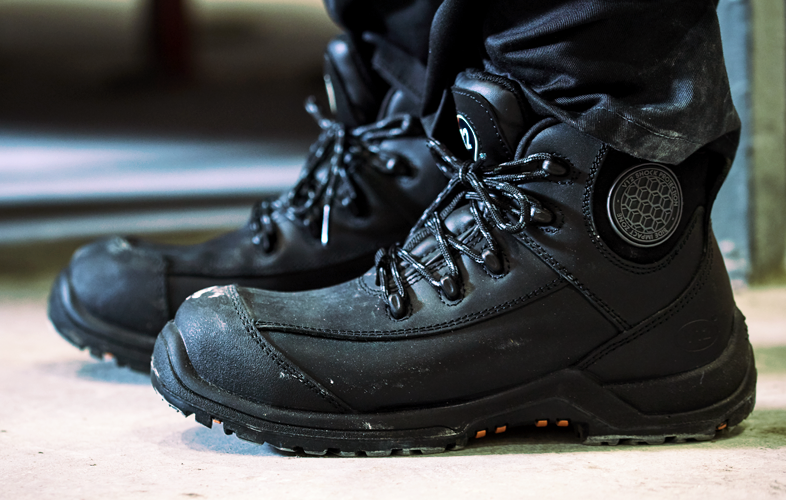
-1.png?width=2492&height=1251&name=V12%20Footwear_Invincible_Email%20Header%20(1)-1.png)

